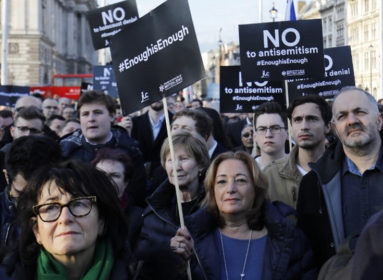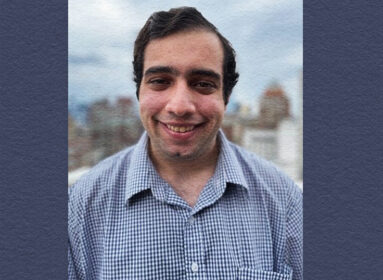By John Kamaras, JointMedia News Service (JNS) ~
DENVER, Colo. – Up until Nov. 8, the American Jewish community could count on three things: death, taxes, and that 75 percent of the overseas portion of Federations’ annual campaign revenues would go to the Jewish Agency for Israel (JAFI), with the other 25 percent left for the American Jewish Joint Distribution Committee (JDC).
However, at the Jewish Federations of North America (JFNA) General Assembly in Denver last week, the organization’s Board of Trustees overwhelmingly approved a new needs-based overseas model called the Global Planning Table (GPT) that it claims will provide a “new structure and process for Jewish Federations and their partners to analyze the needs of the Jewish people in Israel and 70 nations across the globe.”
“The primary role of the Global Planning table is to provide a platform to identify and address the global Jewish community’s most pressing needs,” Cathrine Fischer Schwartz, President and CEO of the Jewish Federation of Greater Hartford told the Ledger. “Rather than reflecting personal or institutional preferences, by leveraging the collective strength of the Federation movement, the projects and programs funded by the GPT will address the key challenges facing the Jewish community and maximize opportunities. Emphasis will be placed on evaluation and accountability to ensure that the programs funded deliver significant results.” Schwartz was one of only a handful of Federation executives to sit on the Global Planning Table Design Committee. She will continue to serve on the GPT advisory committee, representing the large-intermediate city size group.
According to Steven Schwager, CEO of the JDC, the new plan is a step in the right direction for the international organization, which provides relief as well as identity, culture, and social programs for Jews in more than 70 countries.
“For the last 10 years, JDC has been advocating that funding should follow need, and now we have a table where people will come together and talk about the needs of the Jewish people and allocate the limited dollars that are available based on needs,” Schwager says.
“The new allocations process is designed to make sure that the local Federations’ core funding contributed through JFNA continues to be both relevant and necessary, and to make sure that the accountability is maintained throughout the process,” says Steven M. Friedlander, executive director of UJA/Federation Westport Weston Wilton Norwalk. “By allowing other organizations to receive core funding, it enables JFNA to more specifically meet specialized needs.”
Still, says Friedlander, the new plan will not really affect his agency “because we already earmark allocations wherever possible. The system maintains the same goals and the value that the collective system offers remains unchanged.”
Jerry Silverman, CEO of JFNA, says the relationship between the Federation, JDC and JAFI is “not about the [funding] split.”
Still, there is a history of some conflict around the traditional funding split.
JDC initially received almost all of its funding from the United Jewish Appeal (UJA), and allocated funds based on priorities it identified around the world. But by 2008, nine years after UJA merged with the Council of Jewish Federations and United Israel Appeal (UIA) to form United Jewish Communities (now JFNA), just 13 percent of its funding came from Federation, according to Rosen’s book.
From 1939 to 1952, the overseas funding split was 75/25 in JDC’s favor because the organization ran a large-scale welfare program for Jews living in displaced persons (DP) camps following the Holocaust, according to Schwager. By 1952, the camps were closing, and the formula changed in line with the increased needs of Jews in Israel. Now, says Schwager, “we think it’s time the formula changes to follow needs again.”
After the creation of the state of Israel, JDC took a backseat to the UIA with respect to Federation dollars, and a 25/75 percent funding split between JDC and UIA stabilized in the early 1950s, with JDC receiving the smaller portion. Before Nov. 8, the same 25/75 split existed between JDC and JAFI.
Silverman said that in 2009 at a Federation conference in Florida, there was a “very strong decree, frankly, from the [individual] Federations, that they wanted to create a new space where we can take on the biggest challenges of the day, and where we could work in new and different ways with our partners who really have been our historic arms in delivering our mission.”
“As we’ve evolved over time,” he said, “we’ve seen trend changes and shifts in the marketplace and we’ve seen the collective itself, the 157 Federations, begin thinking about things more singularly than collectively. We realized that from the point of our process we had not had a place where the Federations could really come together and really think about the biggest challenges that we face as a Jewish people — where we engage people, where we educate people, where we bring people to the work itself.”
JDC’s current operating budget is close to $360 million a year, with $55 million coming from Federation, according to Schwager. JAFI’s budget is roughly $330 million, and $145 million comes from Federation, Hoffmann said.
Hoffmann noted that JAFI looks to Federation as a “portal for the agency’s work with North American Jewry.” JAFI’s strategic focus, he said, will be to build “a cadre of connected Jewish leaders through Israel experiences and through education” that will “bring to the Global Planning Table skills and programs that make collective action an attractive choice.”
Will the new plan work?
“What it doesn’t address is the fact that the Federation system is raising less money year after year,” says Friedlander. “The expectation is that the new system will better motivate donors to become more involved.”
Jacob Kamaras is the Editor-in-Chief of JNS.







 Southern New England Jewish Ledger
Southern New England Jewish Ledger















